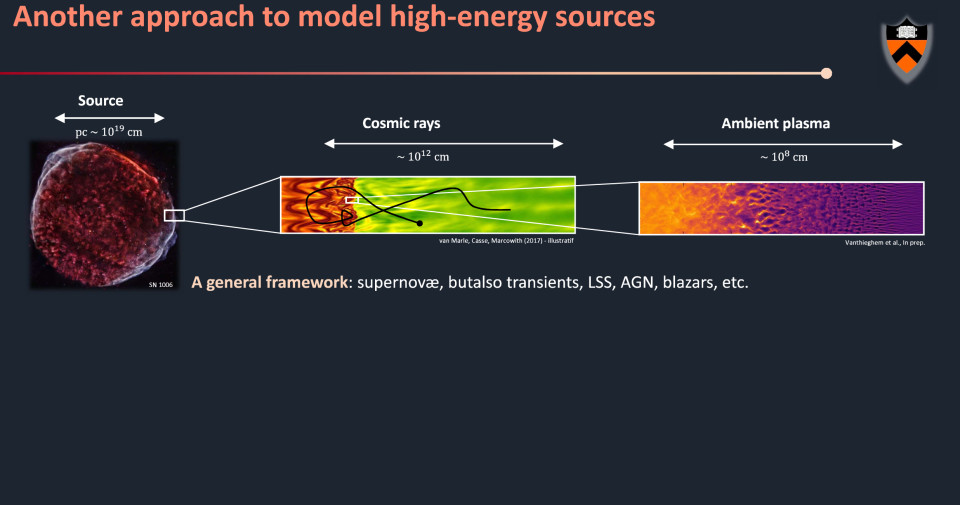ABBL-iTHEMS Joint Astro Seminar by Arno Vanthieghem on September 8, 2023
Relativistic radiation-mediated shocks (RRMS) dictate the early emission in numerous transient sources such as supernovae, low luminosity gamma-ray bursts, binary neutron star mergers, and tidal disruption events. These shock waves are mediated by Compton scattering and copious electron-positron pair creation. It has been pointed out that a high pair multiplicity inside the shock transition leads to a lepton-baryon velocity separation, prone to plasma instabilities. The interaction of the different species with this radiation-mediated microturbulence can lead to coupling and heating that is unaccounted for by current single-fluid models. Arno presented a theoretical analysis of the hierarchy of plasma microinstabilities growing in an electron-ion plasma loaded with pairs and subject to a radiation force. His results are validated by particle-in-cell simulations that probe the nonlinear regime of the instabilities and the lepton-baryon coupling in the microturbulent electromagnetic field. Based on this analysis, he derived a reduced transport equation for the particles that demonstrates anomalous coupling of the species and heating in a Joule-like process by the joined contributions of the decelerating turbulence, radiation force, and electrostatic field. Arno then discussed the effect of finite magnetization on the general dynamics and recent efforts toward a more self-consistent description of the coupling. In general, his results suggest that radiation-mediated microturbulence could have important consequences for the radiative signatures of RRMS.
Reported by Shigehiro Nagataki

